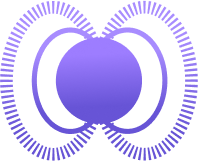Spaced Repetition
Polar implements spaced repetition for flashcards and annotations on mobile and desktop devices.
For spaced repetition you must be logged in via cloud sync. Part of the advantage of spaced repetition is reviewing on mobile devices, tablets, and your web browser and this requires the cloud sync and online storage of your annotations.
Background
If you're not familiar with spaced repetition you can get up to speed by reading this infographic by ncase or "How can we develop transformative tools for thought?" by Andy Matuschak and Michael Nielsen.
At a high level spaced repetition allows you to review your notes by efficiently scheduling them into tasks that can be performed 15-60 minutes per day spread out while you're idle.
Wikipedia has a good overview of SR:
Spaced repetition is an evidence-based learning technique that is usually performed with flashcards. Newly introduced and more difficult flashcards are shown more frequently while older and less difficult flashcards are shown less frequently in order to exploit the psychological spacing effect. The use of spaced repetition has been shown to increase rate of learning.[1]
Although the principle is useful in many contexts, spaced repetition is commonly applied in contexts in which a learner must acquire many items and retain them indefinitely in memory. It is, therefore, well suited for the problem of vocabulary acquisition in the course of second-language learning. A number of spaced repetition software programs have been developed to aid the learning process.
This is based on research from cognitive science around the forgetting curve:
The forgetting curve hypothesizes the decline of memory retention in time. This curve shows how information is lost over time when there is no attempt to retain it.[1] A related concept is the strength of memory that refers to the durability that memory traces in the brain. The stronger the memory, the longer period of time that a person is able to recall it. A typical graph of the forgetting curve purports to show that humans tend to halve their memory of newly learned knowledge in a matter of days or weeks unless they consciously review the learned material.
Flashcards and Incremental Reading
We support spaced repetition for flashcards and your annotations. Reading your annotations with spaced repetition intervals allows you to pursue incremental reading where you re-read important parts of documents you've highlighted.
Anki vs Polar
Polar supports Anki sync and our own native flashcard and spaced repetition based on similar technology and concepts.
If you're a more advanced user, or an existing Anki user, you might still want to use Anki directly.
Read our documentation on Anki Sync if you want to use Anki.
Start Review
Polar allows you to review annotations directly and you can go to the annotation view and then select "Start Review" which will review ten cards at a time.

When you create an annotation or flashcard, they will then be scheduled for the future so that you can review them at a later date.
User Interface
We will compute 10 or more 'tasks' that need to be completed. Right now these are reading reviews but in the future will also be flashcards.

Scheduling
Polar implements a variant of SM2 to schedule cards. This is the same algorithm used in Anki, and SuperMemo with a few modifications which effectively do not change the core scheduler algorithm but just make it easier to work with.
Selecting Specific Tags/Folders, colors, etc
When you click Start Review only the currently shown annotations are considered for review. This will allow you
to narrow a review to a specific folder or tag. You can also filter by annotation color as well.
High-level Overview
Stages
All cards go into a 'learning' mode until you've been able to get a good grasp of the core material. At that point they 'graduate' to a 'review' mode which schedules the jobs at higher and higher intervals when you accurately complete each task.
Once in reading the intervals keep increasing if you keep selecting 'good' until, at some future point, the card becomes so mature that you're only reviewing it every year or so.
When you're reviewing a card and you can't remember it you can hit 'again' and it will lapse and revert back to the learning stage. If you remember it the second time it will go back to review mode with a lower interval.
 Polar
Polar